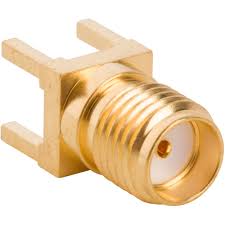SPRUJ29A April 2022 – January 2023
5.3 Evaluation of the Analog-to-Digital Converters (ADCs)
When using the F2800157 on-chip ADCs, there are some useful guideline to follow to realize the performance numbers listed in the device-specific data manual. This is especially true for the AC parameters such as: SNR, THD, and SINAD. Furthermore, it can also be shown that there is a direct correlation between the SNR of the ADC result and the spread of ADC codes seen for a DC input; as such, these tips improve the range and standard deviation of a DC input as well. Finally, while topics addressed are with respect to the controlCARD, the topics are applicable to other implementations using the F2800157 MCU as well.
On-board resistors and capacitors: By default all inline resistors to the ADC pins are a simple 0-Ω shunt and all capacitors to the ground plane are not populated. While this circuit can be used to supply the ADC inputs with a voltage, likely both the resistor (R) and capacitor (C) need to be populated based on the voltage source characteristics. Referring to the ADC Input Model, the ADC input has their own RC network made up of the internal sample and hold capacitor, switch resistance, and parasitic capacitance. By changing the inline resistance and parallel capacitor, we can optimize the input circuit to assist with settling time and/or filtering the input signal. Finally, it is recommended in general to use Negative-Positive 0 PPM/°C (NP0/C0G) capacitors as these have better stability over temperature and across input frequencies than other types of capacitors.
Voltage source and drive circuitry: While the on-chip ADCs are 12-bit architecture (4096 distinct output codes when converting an analog signal to the digital domain), the translation only is as precise as the input provided to the ADC. The typical rule of thumb when defining the source resolution to realize the full specification of an ADC is to have a 1-bit better source than the converter. In this case, that means that ideally the analog input can be accurate to 13-bits.
Typically voltage supplies or regulators are not designed to be precise, but rather accommodate a wide range of current loads within a certain tolerance and for this reason are not ideal to show the performance of a higher bit ADC, like the one on the F2800157. This also does not take into account that many times the supply in question is providing the main voltage to power the MCU itself; which also introduces noise and other artifacts into the signal.
In addition to the quality of the input signal, there is also the aspect of the load presented to the ADC when the ADC samples the input. Ideally, an input to an ADC has zero impedance so as not to impact the internal R/C network when the sampling event takes place. In many applications, however, the voltages that are sampled by the ADC are derived from a series of resistor networks, often large in value to decrease the active current consumption of the system. A solution to isolate the source impedance from the ADC sampling network is to place an operational amplifier in the signal path. Not only does this isolate the impedance of the signal from the ADC, it also shields the source itself from any effects the sampling network can have on the system.
Recommended source for evaluation: The Precision Signal Injector (PSI) EVM from TI can be used to validate the ADC performance on the F2800157 ControlCARD. This EVM supports both single ended as well as differential ended outputs using a 16-bit DAC as the signal source then passed through a high precision op-amp with post amplifier filtering. The EVM is powered and controlled through a standard USB connection from a host PC and includes a GUI to control its output. The outputs are routed through single or dual SMA type connectors; it is highly recommended to place an additional female SMA connector (Figure 5-1) on the controlCARD docking station to receive the signal by way of SMA for best noise immunity. For the local RC network, 30-Ω resistors and 300-pF capacitors were used. Using this setup the ADC parameters were observed to be consistent with the numbers in the device-specific data sheet.
 Figure 5-1 Female SMA Connector
Figure 5-1 Female SMA Connector